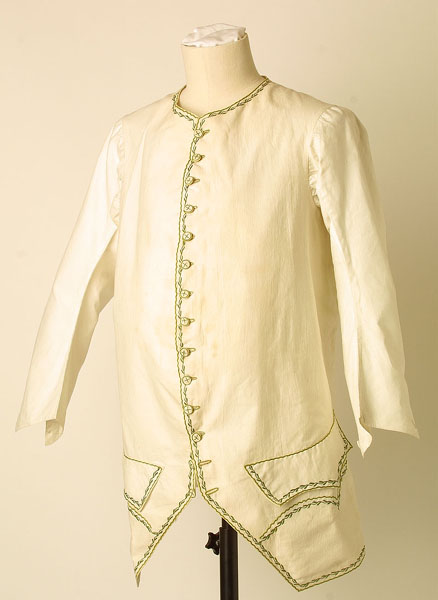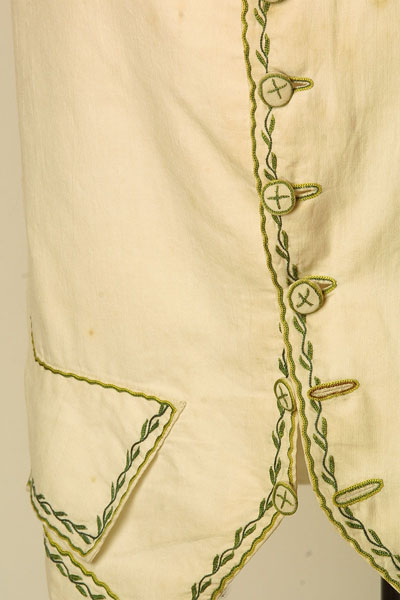waistcoat, sleeved
Summary
white twilled cotton, embroidered in green silk; lining, back and sleeves, linen; front fastening to round neck with fourteen embroidered butttons; long fitting sleeves in two sections with gathered gusset under arms and additional section below gusset, fastening with linen button at wrist; pocket with shaped flap level with lowest button; flared skirt cut away in front; back in two shaped sections; back and side seams open at bottom. Length 34.5ins. Shoulders 16ins.
Display Label
For centuries, the waistcoat was one of the chief areas for decoration in men's dress. During the eighteenth century, waistcoats often matched the coat or jacket and the breeches, either in fabrics like silk brocades, damasks or velvets, or in embroidered decoration in court suits. The main image shows a sky blue silk damask waistcoat which was made of the same fabric as a banyan or gown, and worn as an outfit. By the later eighteenth century waistcoats shortened and ended in a horizontal line at the waist. New fabrics like cotton became fashionable, often embroidered in stylised neo-classical designs. During the nineteenth century, the waistcoat if anything became more of a focus for attention, with the vibrant damasks and brocades contrasting with the increasingly dark, plain and sober cloth suits. Today, 2-piece suits are popular, and it is more often the jazzy tie which lifts the monochrome tone of the outer fabric, and which reveals a little of the character of the wearer.
Object Name
waistcoat, sleeved
Date Created
1760-1780
Dimensions
(L : 34.5 in):
accession number
1953.103
Place of creation
England
Medium
Legal
© Manchester Art Gallery


